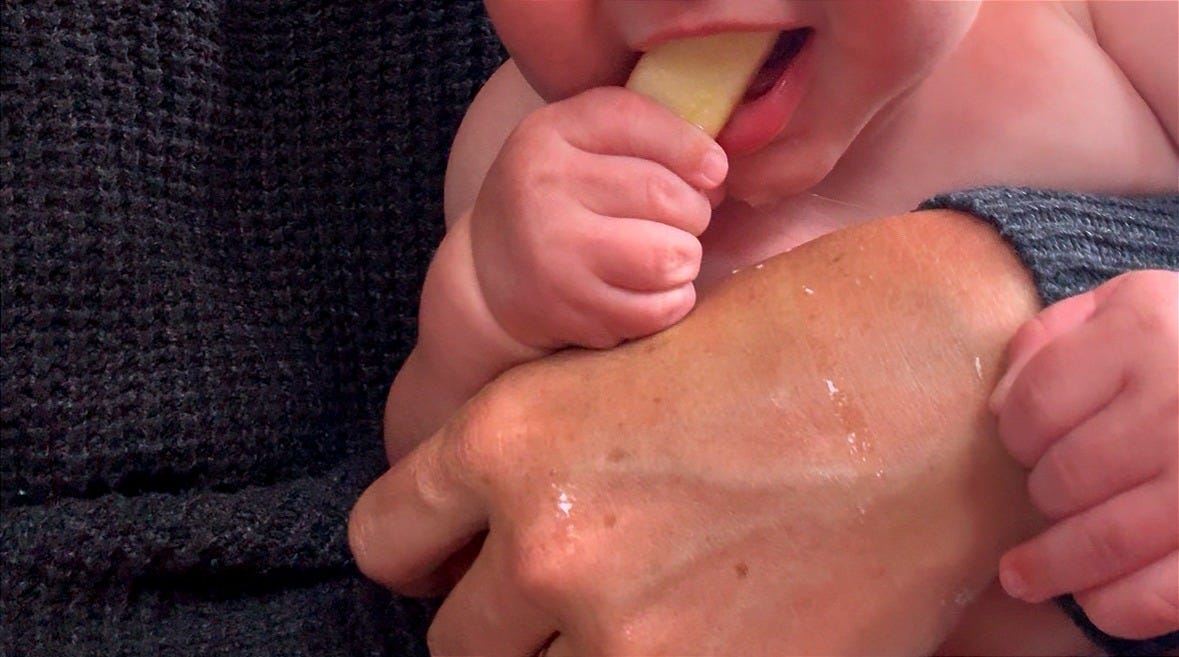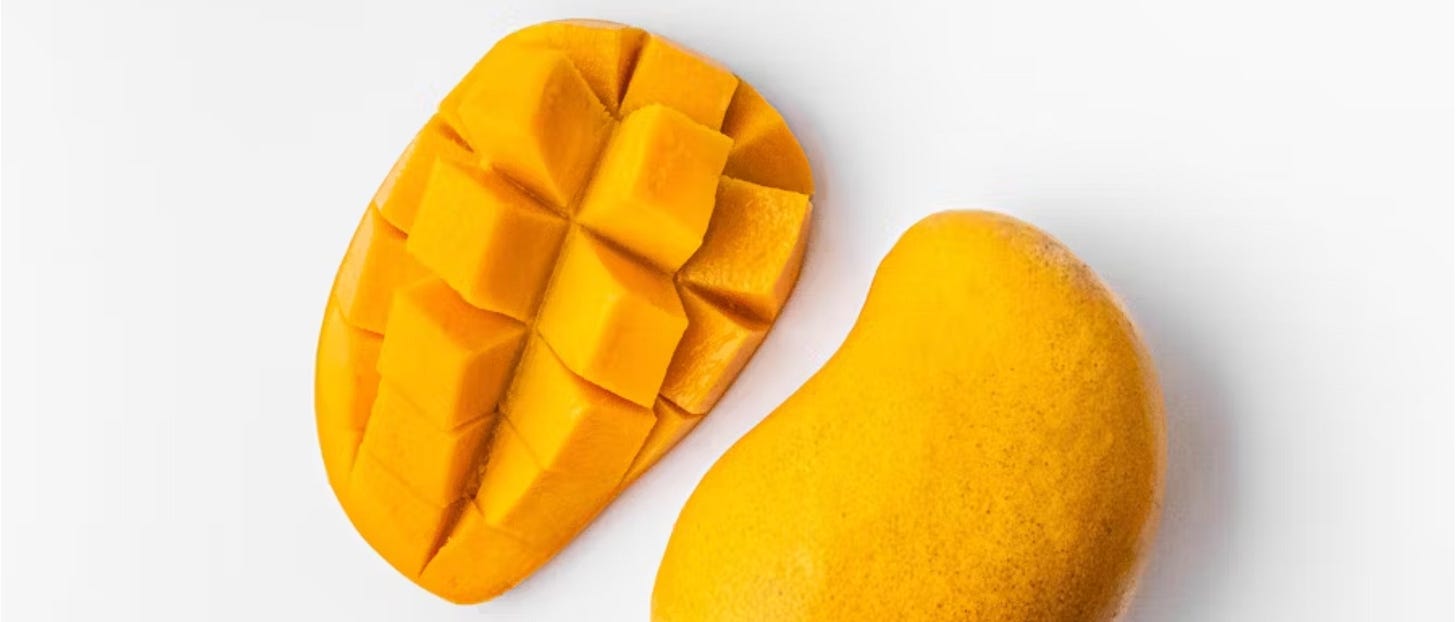By Shannon Marie | Wild Mother’s Way
There’s a strong opinion out there about when babies “should” start solids. Most mainstream advice centers around one number: six months. And while there’s wisdom behind this guideline, it’s worth remembering that babies don’t come out of cookie-cutters. They’re all unique, run on their on timelines, and are deeply intuitive beings—just like their mothers.
So what happens when your 3 month-old starts reaching for your plate, gnawing at everything in sight, and watching you eat with wide, hungry eyes?
You tune in.
The “Six Month” Guideline: Where It Comes From
Let’s start with the basics. Mainstream Health Organizations like the WHO and AAP recommend introducing solids around six months because:
Most babies can sit with support and hold their head up
Their digestive and immune systems are more mature
Iron stores begin to decline around this time
They’ve lost the tongue-thrust reflex (which pushes food out)
So yes—six months is a safe, average time when most babies are ready for food beyond milk. But it’s a guideline, not a commandment. And it doesn’t mean food before then is inherently wrong—it depends on the how and why.
What My Baby Is Showing Me
My little one is about 3.5 months old. No teeth yet, but definitely teething… He’s shoving anything he can get his hands on into his mouth, fussing when we eat in front of him, and deeply curious about what we’re doing with our hands, our mouths, and all those mysterious bites we’re taking.
The other day he was grabbing for my mango and got hold of it, he had a little mango on his hand and sucked it off. I started offering him cold raw carrots as a teether. He can hold them in his hands, and seems to enjoy gumming them. Today as my daughters and I enjoyed some steak, salad, and apple slices, he fussed and fussed until I handed him an apple slice. He sucked the juice out of it with pure joy in his eyes.
These moments weren’t planned feedings. His dad wasn’t home. I didn’t set up a photo shoot and make a huge deal out of it. They were spontaneous, baby-led invitations to explore the world through taste, smell, and texture—on his timeline.

Is It Safe to Let Babies Explore Food Early?
When done mindfully and with supervision, early food exploration is natural, beautiful, and safe.
Here’s what I keep in mind:
✅ Obviously, there’s no pressure to eat — It’s all sensory play and only offered when he initiates interest. My breastmilk is still his primary nourishment.
✅ Choking risk awareness — Whole foods like raw carrot or firm apple slices are only given when I’m right there. I make sure nothing soft or small can break off.
✅ Allergy mindfulness — I only offer one new food at a time, even if it's just a taste, so I can watch for reactions.
✅ Upright posture — I hold him upright in my lap. Even though he can’t sit unassisted yet, his spine and neck are supported.
Pre-Solids Exploration: Not Feeding, But Learning
This isn’t about feeding my baby meals. It’s about letting him experience the world of food slowly and safely.
It’s pre-solids play, and it’s been part of traditional parenting across the world for generations. Before spoons and schedules, babies joined the family table, gnawed on roots, sucked on bones, and tasted broths passed down from mama’s fingers. They learned to trust food. To trust their bodies. To trust life.
So... Is Six Months the Magic Number?
Not really. It’s a useful guide, but it’s not the full story.
The real magic happens when we listen. When we hold space for curiosity. When we honor that our babies—just like us—are on their own timelines.
Some will explore early. Some won’t be interested in solids until well after six months. And both are okay.
Why Following Your Baby’s Cues Matters More Than Following the Calendar
Babies are born wired to learn through experience—by touching, mouthing, tasting, watching, and mimicking the world around them. When they show a clear interest in food—reaching for what you’re eating, opening their mouth, fussing to be included—it’s not random. It’s communication.
Responding to that communication with gentle, safe food exploration builds something foundational: trust.
When we delay all interaction with food simply because the calendar says “not yet,” we risk creating confusion. A baby who’s reaching for an apple but is met with withdrawal or redirection may internalize that food is off limits, even when they’re developmentally ready.
We’re not talking about rushing into spoon-fed meals or replacing breastmilk—we’re talking about meeting curiosity with connection.
Honoring your baby’s cues strengthens:
Attachment and communication between mama and baby
The beginning of intuitive, self-led nourishment
A deeper connection to the rhythms of daily life
When we follow the baby—not the chart—we remember: parenting is relational, not procedural.
For the Wild Mothers
If your baby is reaching, watching, tasting, teething... trust your intuition. Trust your baby. Let food be an invitation, not an obligation. A sensory journey, not a milestone to check off.
And if you need inspiration for safe, whole food ideas your little one can explore (even before they’re “eating”), I’ve got you.
Here are some whole-food items that can be safe for early exploration (under close supervision, and always upright):
🥕 Cold raw carrot (firm enough to gum, not bite)
🍎 Apple slice (firm, I keep mine in the fridge)
🥭 A lick of mango or banana on baby’s hands
🥣 Bone broth (off mama’s fingers)
🍗 Gnawed-on meat bone after a roast
🥚 Soft-boiled egg yolk
This isn’t an exhaustive list… it’s just what comes to mind that’s readily available in our home, ancestrally congruent, and safe for babies. These aren’t meals. They’re invitations. And sometimes, that’s all a baby needs to feel included, empowered, and connected.
Let me know if you’ve ever given your baby a taste of food before six months—and how they responded! Keep following your intuition the wild way: rooted in nature, guided by instinct, and grounded in love.
—
Shannon Marie is a mother, writer, and founder of Wild Mother’s Way—a movement for intuitive, ancestral parenting.






This was a wonderful story! I wish you'd been around when I had my boy. (He's 46 now)